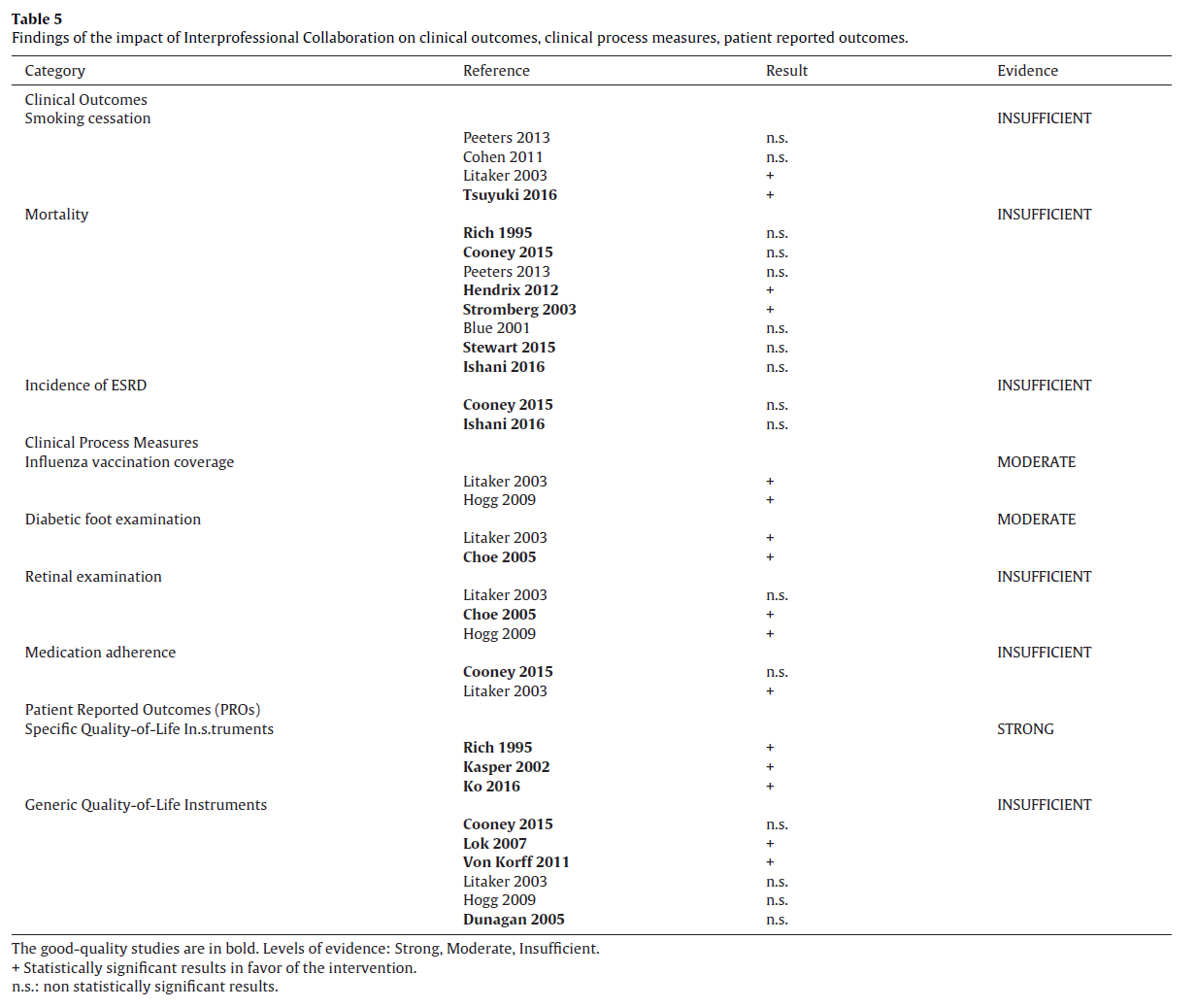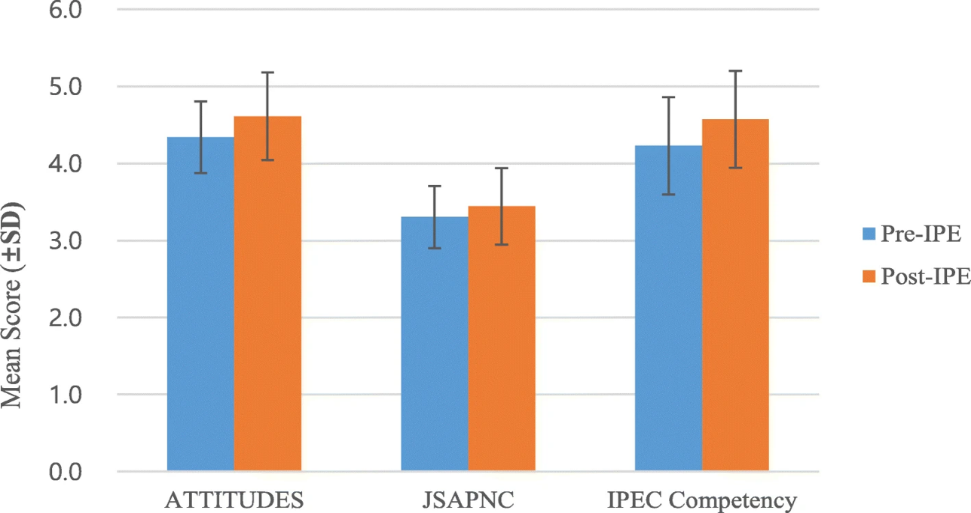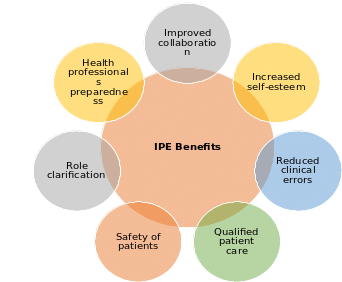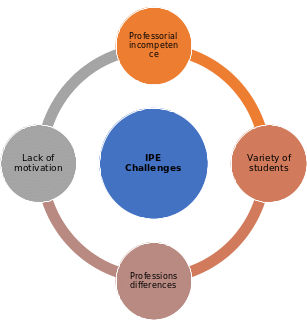Introduction
Today, there are many ways to improve the quality of education, raise standards, and advance knowledge among health professions students. Interprofessional education (IPE) is a teaching practice to promote shared decision-making, patient-centered care, and interprofessional communication. According to the World Health Organization, it occurs when two or more professions learn with or from each other to expand collaboration (as cited in Illingworth & Chelvanayagam, 2017). However, when a person chooses IPE, it is wrong to expect tutors or students from different professions in the same classroom. This approach aims to support students’ collaboration and teach them how to create interprofessional teams and share knowledge. Healthcare experts promote IPE because of changes in aging populations, limited financial resources, and new values of patient care (van Diggele et al., 2020). It is necessary to prepare health professions students for working under various conditions with people who have different backgrounds and outlooks.
The success of IPE depends on many factors, and each country has its specific goals and visions. It is not enough to underline the complexity of the healthcare environments; the promoters of IPE should also focus on students’ and health professionals’ unique needs. During the last several decades, IPE integration has been observed across the globe to meet accreditation requirements and enhance education quality (El-Awaisi et al., 2017). On the one hand, learners could benefit from IPE to reduce clinical errors, improve patient care and safety, achieve positive health outcomes, and implement collaboration to be better prepared as health experts. On the other hand, the chosen teaching method has such drawbacks as poor motivation, professions’ differences, and incompetence in exchanging knowledge and experience. Despite the existing challenges and opportunities, IPE is a significant method in modern health professions education. Including the current statistics, observations, and reviews, this report discusses IPE professional and organizational benefits and personal shortages and recognizes a variety of functions in health care.
IPE in Medical Care Statistics
Before diving into the benefits and shortcomings of IPE, one should learn that IPE and similar collaborative methods are commonly used in various clinical settings to improve patient health and care quality. Students and medical workers demonstrate their positive attitudes towards IPE and view it as a benefit rather than an obstacle. However, if there is no or weak association between IPE and patient outcomes, hospitals are not eager to promote appropriate policies. Medical researchers continue developing their studies to ascertain IPE deserving characteristics and encourage extra training and health professions education.
Systemic reviews establish a link between IPE and inter-professional collaboration (IPC) and define additional health characteristics for patients. There were positive findings in 23 out of 11,128 studies for IPC-related processes that upgraded coordinated care for chronic patients (Pascucci et al., 2021). As shown in Figure 1, there is strong evidence that patients who receive IPC report positive outcomes. Aging-related problems and scared resources are observed in more than 70% of chronic patients, and policy-makers promote technological networks and “establish an educational lever in support of the collaborative approach” (Pascucci et al., 2021, p. 200). Chronic disease management may be significantly improved if practitioners implement their IPE knowledge and observations.
Other studies were performed relying on the participation of medical professionals to assess their thoughts on IPE and learn the changes in primary health care. El-Awaisi et al. (2021) examined the opinions of 1,415 participants and found that most of them were optimistic about IPE and believed that good management, role clarification, respect for autonomy could prevent collaboration obstacles. New 100 IPE programs were established in 70 American sites to gather more opinions and see how knowledge was generated and what contributions were achieved (Delaney et al., 2020). Maximized contributions to all health professionals and enhanced patient care were proved to be possible in a short period. The effectiveness of IPE is observed at individual levels and in educational strategies because students are interested in this method of education and cooperation (Guraya & Barr, 2018; Ramsay et al., 2021). Still, not many quantitative statistics are available on this topic, and most researchers pay attention to qualitative shifts and factors.

Benefits and Opportunities in IPE

Implementing IPE programs is a solid step in supporting students, promoting health professions education variety, and encouraging teaching. As shown in Figure 2, the effectiveness of IPE is assessed through participants’ attitudes and competency. However, Yu et al. (2020) also investigated the benefits of this practice to cultivate self-confidence and collaboration. If there is a chance to raise students’ interest in a subject and involve people in academic activities, it should be used to improve nursing and health care regardless of available sources and prevailing problems.
In addition to beneficial collaboration, IPE is characterized by the possibility to reduce clinical errors and improve patient safety. Improved communication leads to care coordination, which, in its turn, results in reducing medical errors and ensuring patients’ well-being and safety (Fahs et al., 2017). Students learn how to develop their work in the most effective way by recognizing the needs of patients and medical personnel needs. The exchange of patient information allows to create care plans quickly and specifically (Homeyer et al., 2018). Nurses and other healthcare practitioners understand the basics of collaboration with different people during their IPE courses and find practical application to their theoretical knowledge in a setting. Thus, medical and clinical errors can be reduced due to enlarged experience and practice.
As soon as students learn how to predict mistakes and achieve better results in their work, they become responsible for patient safety and the level of care quality. Many tasks touch upon the control of medications, dosage, treatment, and the application of new technology (El-Awaisi et al., 2021). IPE is a means to learn a variety of topics that could matter in health care, and students get a clear idea of how to combine pharmacological or medical recommendations with patient interests and cultural aspects. Patients and their families have access to knowledge about their conditions because nurses are eager to share this information.
Another benefit of IPE lies in role clarification and the discussion of duties in each clinical setting. For example, many hospitals have departments to regulate nursing activities, management tasks, and communication means. However, less attention is paid to students’ perceptions of their roles as nurses or other healthcare practitioners. IPE offers an opportunity to compare what has been learned, what is required in a real-world environment, and how clinical training differs from everyday practice (Yu et al., 2020). Engagement with other workers in the same environment is always difficult to understand and accept if no practice has been done before. Thus, IPE is a requirement under which students investigate different aspects of collaboration and recognize their roles from different perspectives. Role clarification is a vital aspect in nursing and health care that has an impact on patients and employees.
Finally, personal and professional growth is inevitable for students who take IPE courses properly. This form of education is effective in developing respectful relationships with different groups. First, students observe their settings and get instructions from experts. The next step is to understand what increases their professional and academic satisfaction. Third, students are ready to demonstrate their respect for healthcare professions (El-Awaisi et al., 2021). Lastly, they make necessary contributions and develop commitments. This plan of action is critical for IPE and helpful for clinicians in their real practice. In Figure 3, the illustration of benefits proves the equality of every aspect in IPE. It does not matter what outcome is required and what background knowledge is obtained; IPE promotes collaboration, high self-esteem, high-quality care and safety, role clarification, and professional preparedness. Millions of people around the globe want to increase their educational opportunities, and the number of competencies associated with IPE meets most expectations and accreditation requirements.

Challenges and Disadvantages in IPE
Although IPE is one of the most effective strategies characterized by many general improvements in health care service and enhancement of clinical and patient outcomes, certain limitations cannot be ignored. As shown in Figure 4, some concerns stand against IPE and destroy the worth of collaboration between physicians, students, and educators to come out with significant results. Scholars believe that unconscious professorial incompetence concerning IPE and poor awareness prevents the regular application of this method in academic facilities (Houldsworth, 2018). Some professors are not familiar with the IPE concept and are incapable of applying decisions under this term. (Ahmady et al., 2020). They do not know how to share their thoughts, appraise, and evaluate the decisions that are perfect for a patient-centered approach. Lack of experience can result in poorly developed curricula, inappropriate resources, and weak leadership (Sunguya et al., 2014). Therefore, this will lead to insufficient understanding of the patient’s condition and the inability to assess the best treatment with the assumed autonomy concept.

Grouping healthcare professions in a common course to study specific cases without illustrating their positions and responsibilities would also cause a severe barrier from having successful IPE experiences. It is expected that participants from other health care professions who are acknowledged about their roles result in notable improvements in patient-centered care (Sunguya et al., 2014). Thus, a variety of students with their cultural backgrounds, stereotypes, and attitudes impede the effective integration of IPE programs in modern courses.
Finally, lack of motivation results in additional mistakes in IPE organization and promotion. A poor structure of the IPE program means the emergence of unfavorable outcomes and the loss of interest among participants from various professions of health care. Additionally, people do neither recognize nor understand IPE’s importance, so that no positive results are achieved. Problem-based learning is a helpful technique in solving and recentering the focus of education and indicating collaborative work motivation (Sunguya et al., 2014). The developers of IPE programs should take notes about all the details to keep a team motivated and enthusiastic at different periods.
Conclusion
Health and education systems undergo considerable changes and improvements regularly. Some people are interested in discussing the peculiarities of nursing and health care as a unique form of art, while others believe that IPE better discovers its main characteristics. Therefore, IPE has many supporters due to a number of benefits and new opportunities and opponents because of its challenges and drawbacks. IPE is a method of education when students with different professional backgrounds learn how to collaborate and exchange their knowledge as a part of their academic program. Many students are interested in this form of education because it has a positive contribution to patient care and safety by reducing clinical errors and improving health outcomes. Students are involved in multiple collaborative processes to build teams, exchange information, and support organizational culture. With time, they are able to enhance their confidence and demonstrated increased self-esteem as clinical experts. Their skills are constantly developed and integrated into various working environments, which allows organizing tasks, role specification, and communication.
At the same time, this report mentions that IPE has certain challenges and disadvantages that question the effectiveness of this practice for medical and nursing students. One of the most evident problems is that not all people, including teachers and students, have enough background knowledge about IPE. Therefore, it is hard for them to create and participate in appropriate curricula. Some participants are challenged by poor motivation, which is also related to a low level of knowledge and experience. IPE is a relatively new practice, and concerns occur because of the necessity to combine a variety of students and their needs and recognize professions’ diversity in a learning process. In other words, students could benefit from this approach in their future careers if teachers understand how to implement it properly. IPE is associated with a great commitment and support where creativity, flexibility, communication, and teambuilding are highly appreciated.
References
Ahmady, S., Mirmoghtadaie, Z., & Rasouli, D. (2020). Challenges to the implementation of interprofessional education in health profession education in Iran. Advances in Medical Education and Practice, 11, 227–236.
Delaney, C. W., AbuSalah, A., Yeazel, M., Stumpf Kertz, J., Pejsa, L., & Brandt, B. F. (2020). National center for interprofessional practice and education IPE core data set and information exchange for knowledge generation. Journal of Interprofessional Care.
El-Awaisi, A., Awaisu, A., Aboelbaha, S., Abedini, Z., Johnson, J., & Al-Abdulla, S. A. (2021). Perspectives of healthcare professionals toward interprofessional collaboration in primary care settings in a middle eastern country. Journal of Multidisciplinary Healthcare, 14, 363–379.
El-Awaisi, A., Wilby, K. J., Wilbur, K., El Hajj, M. S., Awaisu, A., & Paravattil, B. (2017). A middle eastern journey of integrating interprofessional education into the healthcare curriculum:A SWOC analysis. BMC Medical Education, 17(1).
Fahs, D. B., Honan, L., Gonzalez-Colaso, R., & Colson, E. R. (2017). Interprofessional education development: Not for the faint of heart. Advances in Medical Education and Practice, 8, 329-336.
Guraya, S. Y., & Barr, H. (2018). The effectiveness of interprofessional education in healthcare: A systematic review and meta-analysis. The Kaohsiung Journal of Medical Sciences, 34(3), 160–165.
Homeyer, S., Hoffmann, W., Hingst, P., Oppermann, R. F., Dreir-Wolfgramm, A. (2018). Effects of interprofessional education for medical and nursing students: Enablers, barriers and expectations for optimizing future interprofessional collaboration – A qualitative study. BMC Nursing, 17.
Houldsworth, A. (2018). Conscious competence in interprofessional learning in healthcare education. MedEdPublish, 7.
Illingworth, P., & Chelvanayagam, S. (2017). The benefits of interprofessional education 10 years on. British Journal of Nursing, 26(14), 813-818.
Pascucci, D., Sassano, M., Nurchis, M. C., Cicconi, M., Acampora, A., Park, D., Morano, C., & Damiani, G. (2021). Impact of interprofessional collaboration on chronic disease management: Findings from a systematic review of clinical trial and meta-analysis. Health Policy, 125(2), 191–202.
Ramsay, D., Bolous, Y., Huo, B., McDermott, E. E., & Campbell, S. G. (2021). The effectiveness of an interprofessional education course in teaching the importance of choosing wisely and resource stewardship: A pilot study. Cureus, 13(5).
Sunguya, B. F., Hinthong, W., Jimba, M., & Yasuoka, J. (2014). Interprofessional education for whom? – Challenges and lessons learned from its implementation in developed countries and their application to developing countries: a systematic review. PloS One, 9(5).
van Diggele, C., Roberts, C., Burgess, A., & Mellis, C. (2020). Interprofessional education: Tips for design and implementation. BMC Medical Education, 20.
Yu, J., Kim, M., Choi, S., Lee, S., Kim, S., Jung, Y., Kwak, D., Jung, H., Lee, S., Lee, Y. J., Kang, Y., Kim, S. M., & Lee, J. (2020). Effectiveness of simulation-based interprofessional education for medical and nursing students in South Korea: a pre-post survey. BMC Medical Education, 20.
